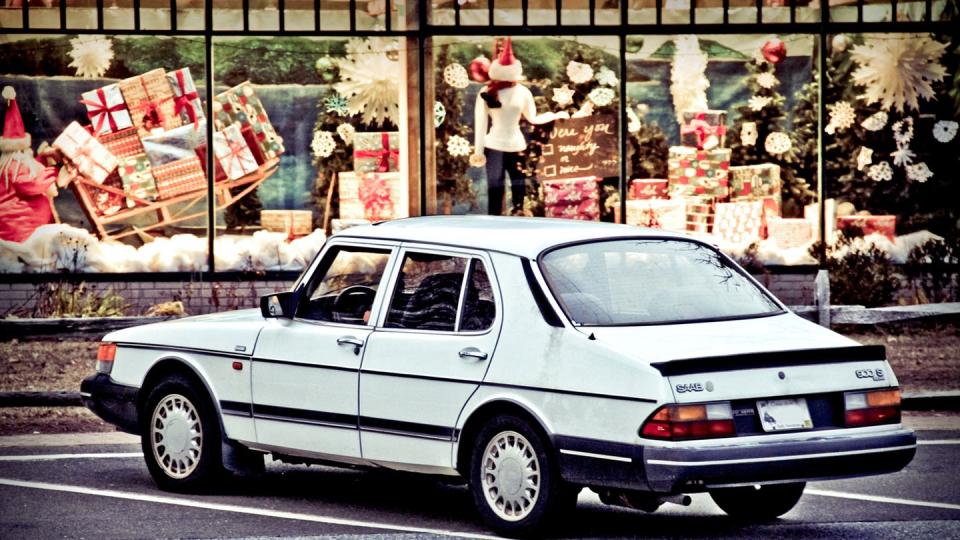We Spotted This Saab 900S, Painted Swedish Snow White

The Saab 900 is still a common-enough sight in some parts of the country, but finding its four-door notchback sibling takes a little more effort these days.
Saab's main model line when it came to sales for a big chunk of the 1980s, the 900 retained the general styling of its 99 predecessor while still offering a number of uniquely Saab features inside.
The 900 also helped the marque develop a cult following—and not just among New England college professors with elbow-padded jackets—allowing the brand to flourish stateside with just a couple of closely spaced model lines. (Just think of what it could have accomplished with an actual station wagon in its stable).
And it's still one of those 40-year-old cars, along with the Volvo 240 and the Mercedes-Benz W123, that could be seen in traffic as a daily driver without anybody really taking note of how old it actually is.
"It's just some old Saab," people would shrug, being so used to seeing them.
Saab was certainly one of the automakers that embraced turbocharging early on, and the 900 Turbo model served up quite a bit of performance back in the day: 135 hp and 172 lb-ft of torque courtesy of its turbocharged inline-four, which could be paired with a five-speed manual or a BorgWarner three-speed auto.
That was a lot of power for a four-cylinder model at the time, and it helped that the chassis knew what to do with that power.
The output grew to 160 hp and 188 lb-ft of torque for 1985, making the 900 Turbo something of a stealth fighter in its day. In non-turbo form the 900S still produced a respectable 115 or 125 hp, depending on year.
The 900 sedan competed against an extended cast of characters when it was new, including some very obvious suspects you might remember, as well as the likes of the Peugeot 504, Alfa Romeo Milano, and the Renault 18i at different points during the decade.
But while all of those other low-volume foreign cars quickly faded away, the Saabs did not.
The debut of the 900 in 1978 was, in many ways, the event that took Saab from being an oddball import into something far more ubiquitous, at least on the two coasts.
Being ahead of its time the 900 aged well into the 1990s, with the larger 9000 model managing to steal some sales from a variety of other European luxury brands.
Saab was able to retain its core audience with the introduction of a next-gen 900 for 1994, with cars of that generation remaining in good supply on the two coasts, even in the snowier parts of the country where the front-wheel-drive layout has proven itself in winter driving. And that's despite the dealer network having now been gone for a decade.
Of course, by now the ratio of surviving 900 convertibles to sedans greatly favors the former, making this sighting of a well-kept notchback sedan a treat.

 Yahoo Autos
Yahoo Autos 